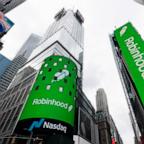Consumers are spending, but on used goods, debt payments
— -- Consumers may not be buying new cars, but they are spending: They're buying used and second-hand goods, repaying debt, and even paying to fix up their homes.
The financial markets reeled last week on news of disappointing retail sales. But second-hand stores are booming. Goodwill Industries, for example, reported that sales in March were up 7% from a year earlier at stores that had been open at least a year.
In contrast, discount retailer Target saw its March sales fall 6.3% from a year earlier, and sales at luxury department store Neiman Marcus were down 30%.
"We're seeing classic recession behavior," says Mark Vitner, senior economist at Wachovia. "People are trying to get more value for every dollar they spend."
Coupon use is rising, too. Shoppers increased use by 10% in the fourth quarter of 2008 from the previous three months, according to the latest data available from Inmar, which tracks coupon usage.
Money that might otherwise go to local restaurants or department stores is also being used to pay down debt. Consumer borrowing fell 2% in the first quarter, according to data released last week by the Federal Reserve. Revolving credit fell at a 6.5% annual rate.
"Paying down debt makes perfect sense," Vitner says. "Incomes and wealth have taken a huge hit."
Repaying debt is a relatively simple way to increase disposable income and shore up finances.
Finally, people are starting to spend on remodeling, according to the National Association of Home Builders. The NAHB Remodeling Market Index rose to 34.5 from 25.5 in the first quarter of 2009, the latest data available. The index should be above 50 for a healthy remodeling market, says NAHB, but it's a long way above its all-time low of 18.6 in 2008's third quarter. The NAHB's index for repairs and renovations rose 29% in first quarter 2009; its major renovation index jumped 69%.
Lowe's, the home-improvement chain, saw first-quarter profit drop 22%, but that figure topped analysts' expectations.




